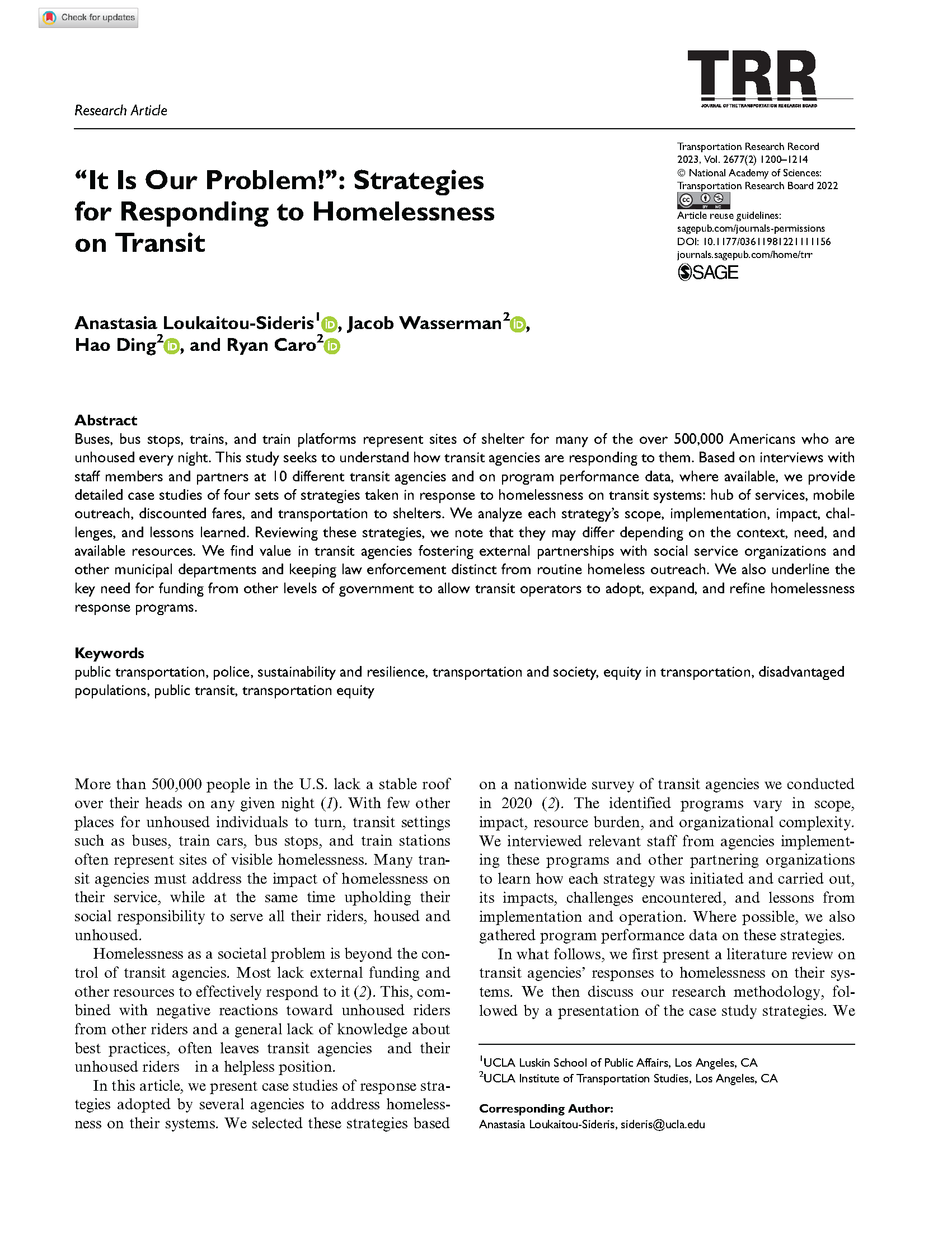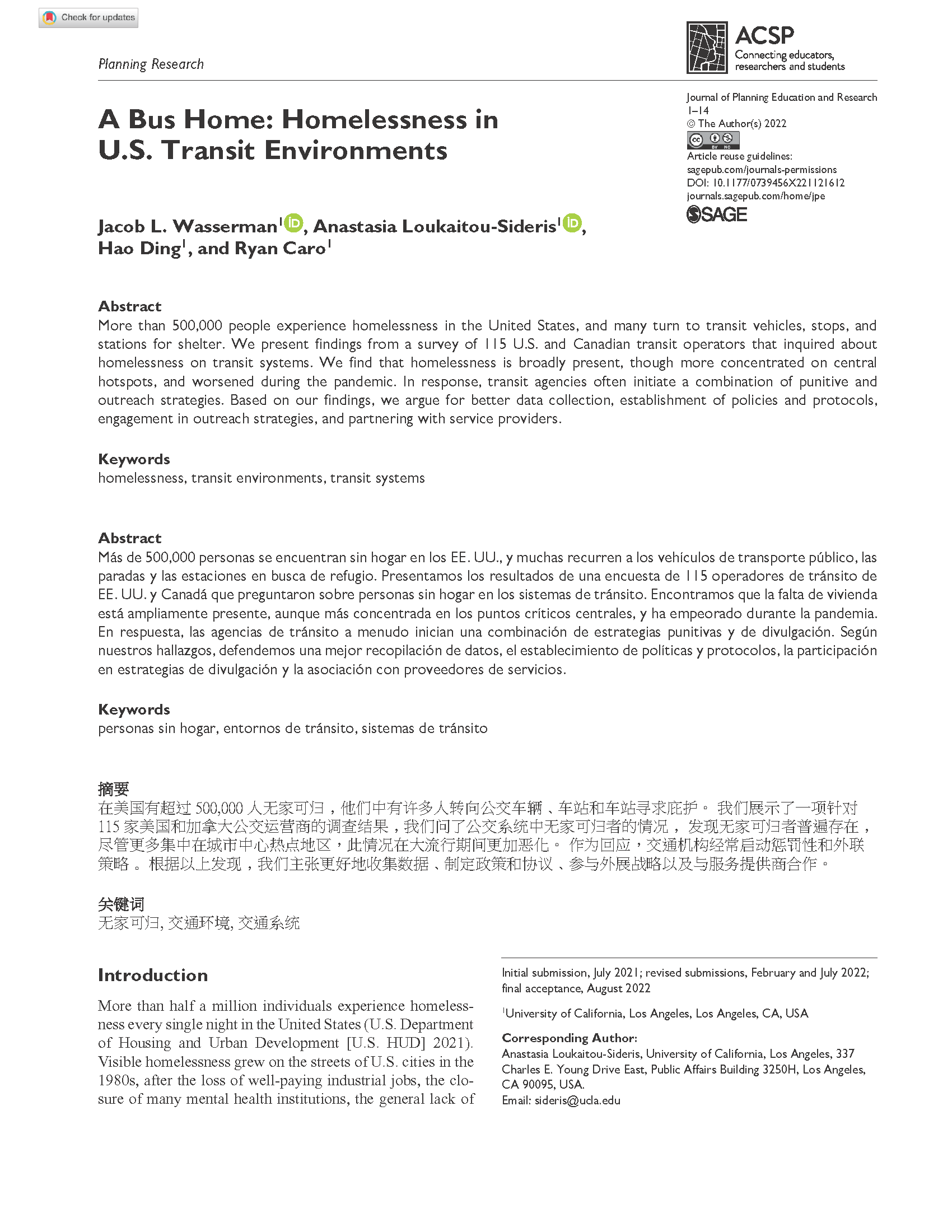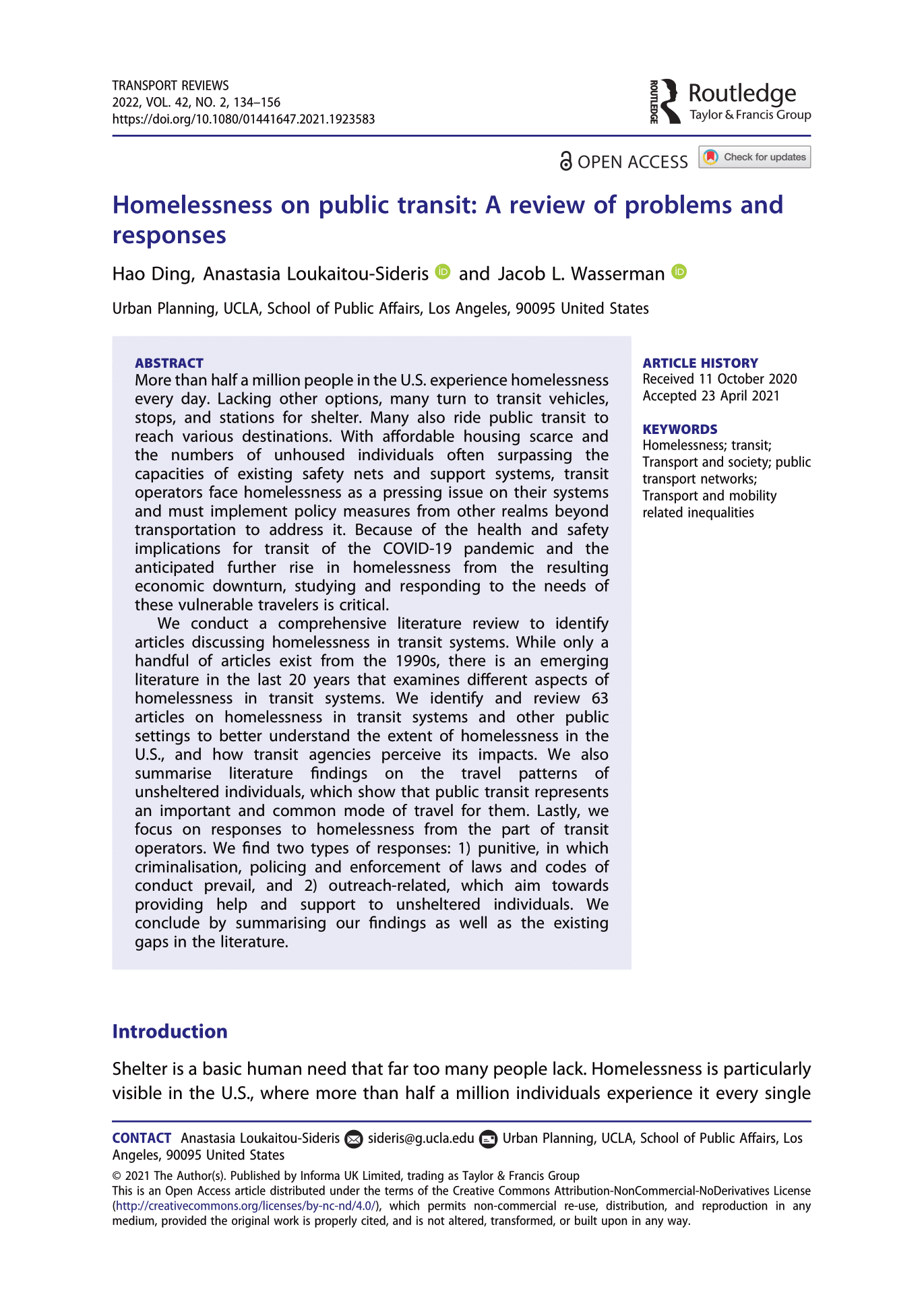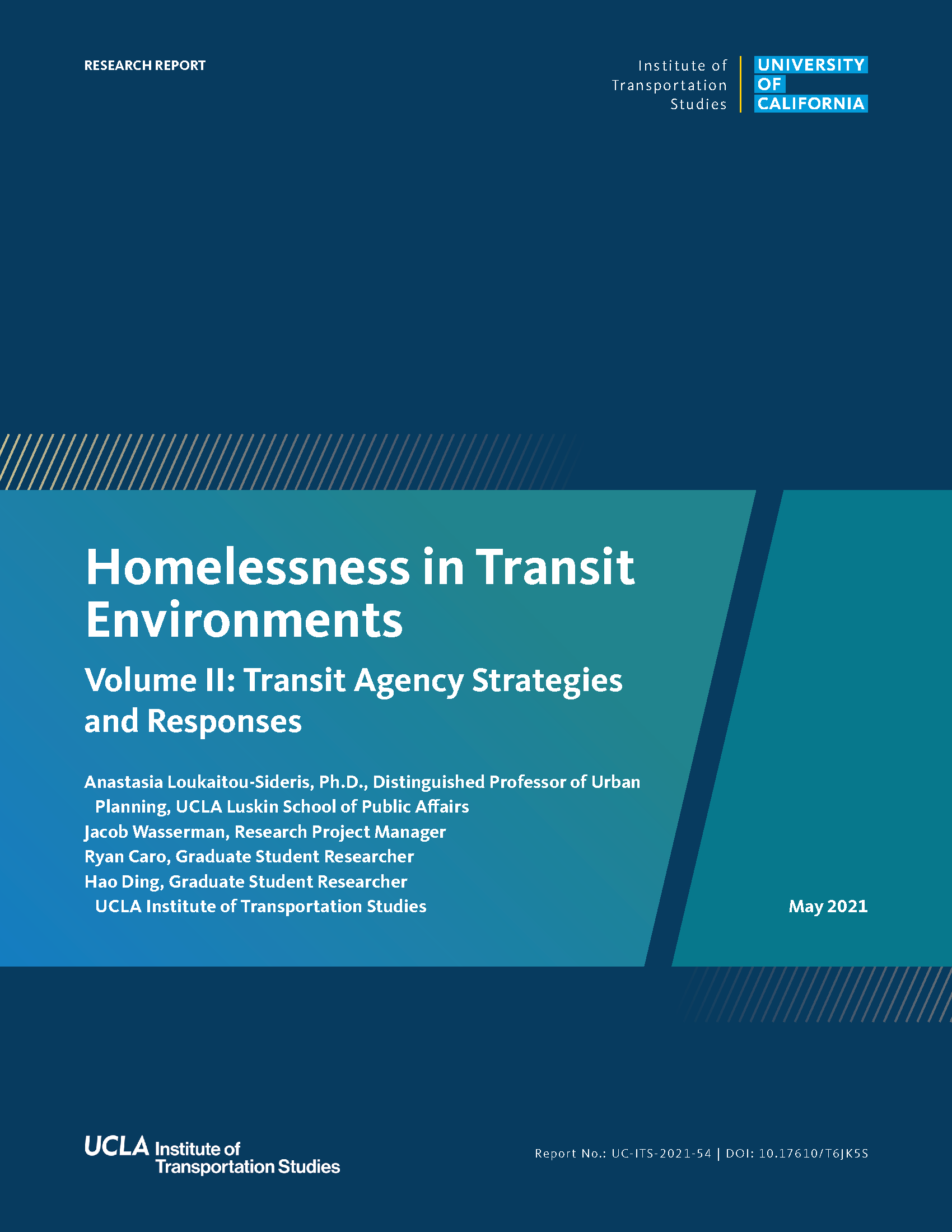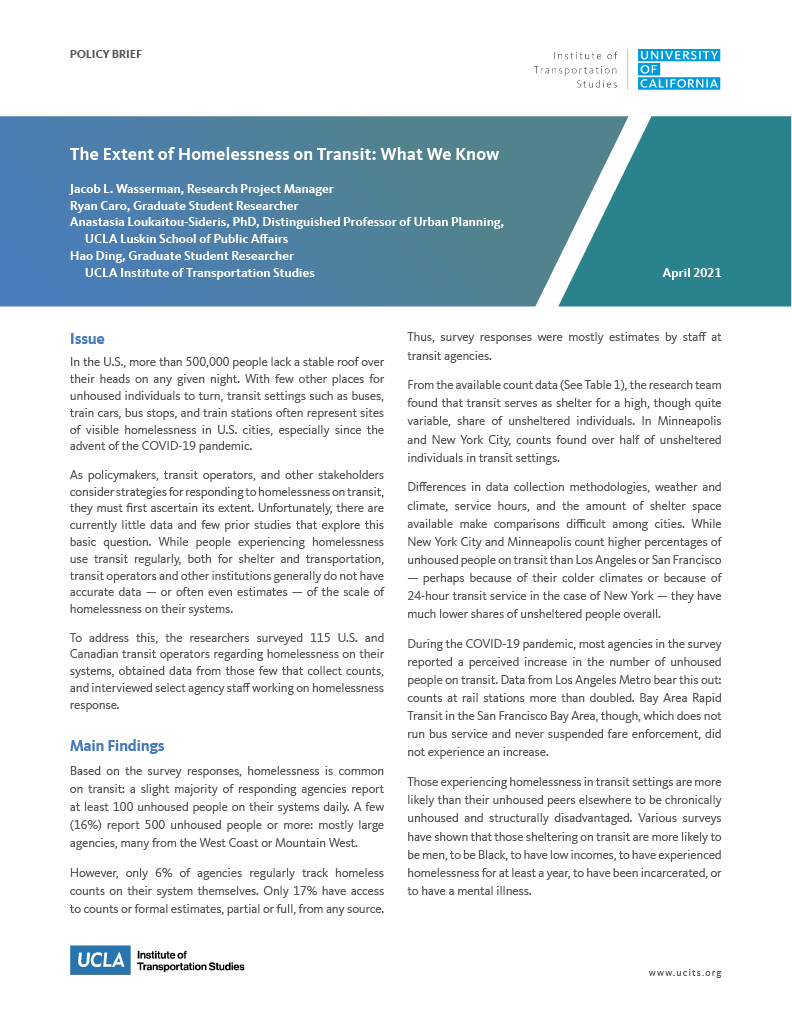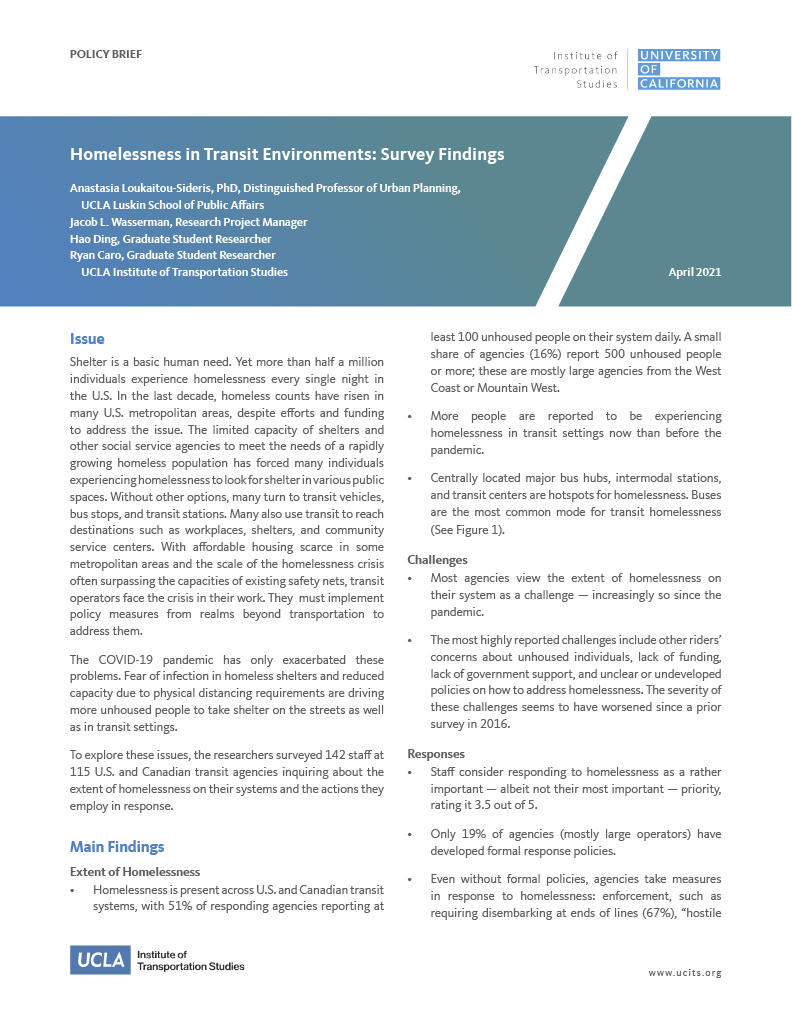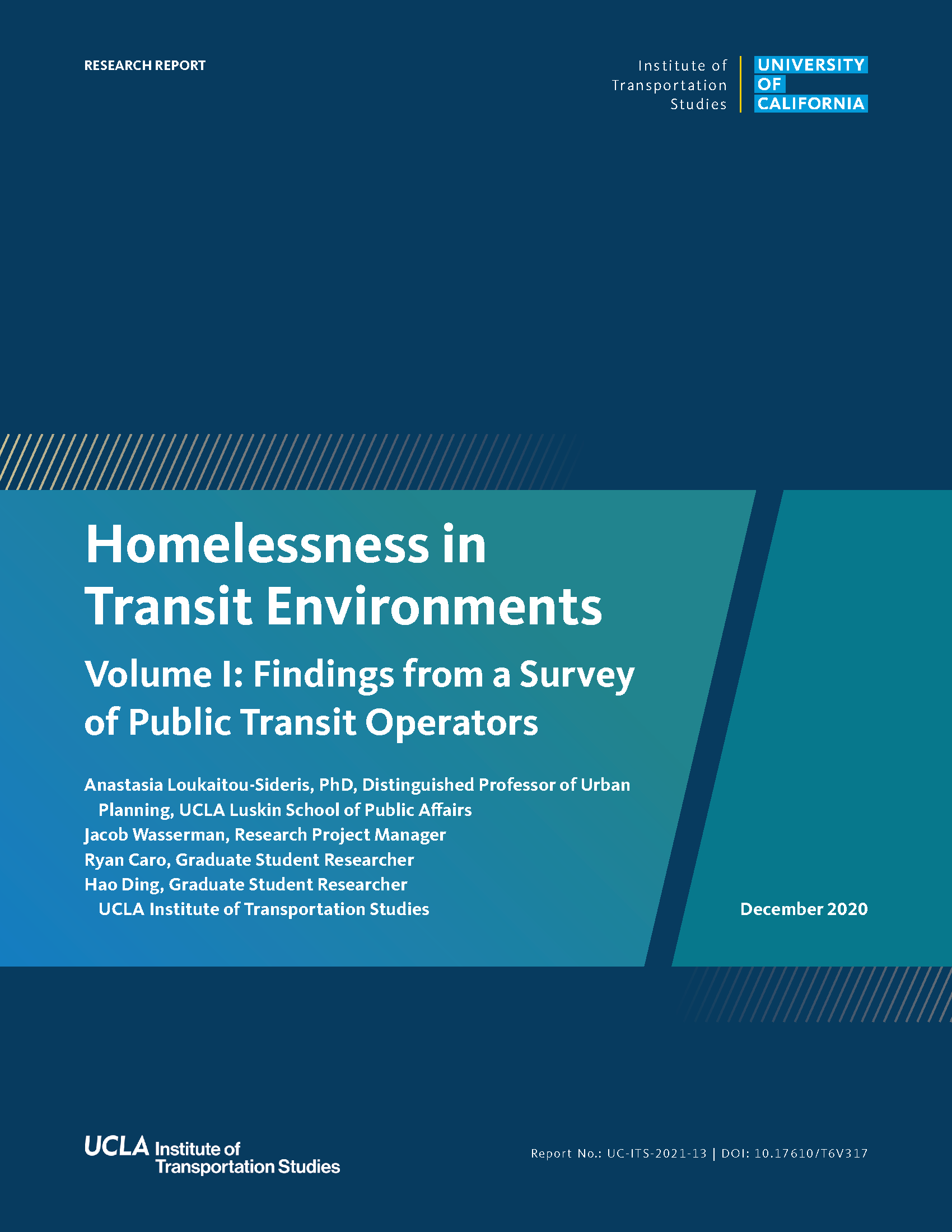Project ID:
LA2003Year Completed:
2021Funding Source:
Statewide Transportation Research ProgramProject Description
More than half a million individuals experience homelessness every night in the U.S. With the scale of the crisis often surpassing the capacities of existing safety nets—all the more so since the onset of the COVID-19 pandemic—many turn to transit vehicles, stops, and stations for shelter. Many also use transit to reach destinations such as workplaces, shelters, and community service centers. These reports investigate the intersections of the pandemic, transit, and homelessness; the scale of homelessness on transit; and how transit agencies are responding to the problem. All told, centering the mobility and wellbeing of unhoused riders fits within transit’s social service role and is important to improving outcomes for them and for all riders.
Volume I presents the results of a survey of 115 transit operators on issues of homelessness on their systems. We find that homelessness is broadly present across transit systems, though concentrated on larger operators and central hotspots, and has reportedly worsened on transit during the pandemic. The perceived challenges of homelessness are deepening, and data, dedicated funding, and staff are rare. However, a number of responses, including external partnerships and outreach and service provision, are growing, and agencies are adapting quickly to the pandemic.
In Volume II, Part I describes the extent of homelessness on transit in several areas by using count data and synthesizing prior research. We find that transit serves as shelter for a high, though quite variable, share of unsheltered individuals, who are more likely than their unhoused peers elsewhere to be chronically unhoused and structurally disadvantaged. Part II provides detailed case studies of strategies taken by transit agencies around the country: hub of services, mobile outreach, discounted fares, and transportation to shelters. We summarize each strategy’s scope, implementation, impact, challenges, and lessons learned. Reviewing these strategies, we find value in collecting data more systematically, fostering external partnerships, keeping law enforcement distinct from routine homeless outreach, educating the public, and training transit staff—all in the context of a broader need for more housing and services.
Publications

Anastasia Loukaitou-Sideris (PI)
sideris@ucla.edu
Research Team
Program Area(s):


